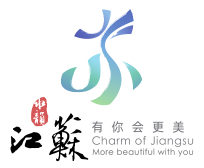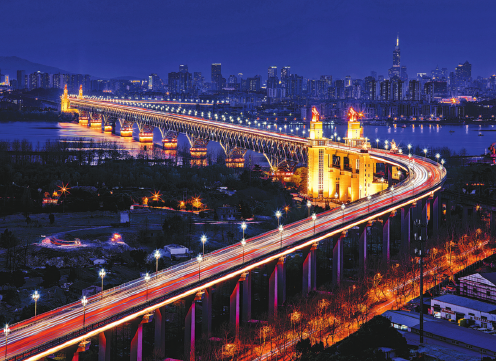Jiangsu using river culture to assist integrated development
Building a creative economy and high-speed rail among plans to level socioeconomic progress
Jiangsu province, an economic powerhouse in East China, is riding the wave of the burgeoning Yangtze River culture to promote its socioeconomic coordination and establish a high-quality development pattern.
Situated in the lower reaches of the Yangtze, Jiangsu is hailed as "a land of fish and rice". As one of China's mother rivers, the Yangtze has provided the province with fertile ground for economic growth and distinctive culture, as well as elevating it to become the best-known Jiangnan area. Jiangnan, which literally means south of the Yangtze River and refers to the regions around its lower reaches, is a cultural symbol that represents people's longing for a beautiful, prosperous and exquisite life. Recognized at home and abroad, it is the essence of Jiangsu's Yangtze River culture.
With a length of 432.5 kilometers, the Jiangsu section of the Yangtze runs through the eight cities of Nanjing, Zhenjiang, Yangzhou, Taizhou, Changzhou, Wuxi, Suzhou and Nantong, linking diverse cultures and scenery in Jiangsu.
Yangtze River culture is of great significance to Jiangsu's construction of a shared cultural community in the province, experts said.
The Yangtze River is an iconic cultural symbol of Jiangsu as many representative cities featuring Jiangsu culture are located along the Yangtze River. Jiangsu's prime cultural resources are distributed along the river, they added.
In 2013, 19 out of 20 Jiangsu cultural symbols came from the Yangtze River, official data showed.
On top of this, Jiangsu has seen comprehensive development of its cities along the river. For example, Yangzhou and Suzhou are known for their typical Jiangnan ethos; Wuxi and Nantong have seen rapid growth in industry and commerce; and the capital Nanjing is a city that blends tradition and modernity. These core elements make the Yangtze River culture a backbone network for Jiangsu's cultural industry, according to experts.
By utilizing these resources, Jiangsu focuses on capitalizing on the Yangtze River culture. Currently, the province is promoting the construction of a national cultural park and dedicating itself to developing a creative economy revolving around the culture.
The construction of the national cultural park featuring Yangtze River culture aims to revive historical resources, further explain this culture and discover the greater value of the Yangtze River, experts said.
Relying on the Yangtze River culture, Jiangsu has continued to give full play to its strengths. It should increase efforts to mobilize its water resources to develop the cultural and tourism industry and to find varied cultures across Jiangsu and make the province stand out among its peers, experts said.
In December, the Jiangsu provincial government issued its cultural development guideline for the 14th Five-Year Plan (2021-25), highlighting the protection and inheritance of the Yangtze River culture.
According to the guideline, efforts will be made to continuously discover and protect cultural heritage in the Jiangsu section of the Yangtze River; establish specific research institutes centering on Yangtze River culture; construct a corridor featuring this culture; organize themed activities to promote the Yangtze River culture and build this cultural brand.
Other efforts — such as improving the protection system for the Yangtze River cultural heritage and organizing themed forums and activities — are needed, according to the guideline.
Leveraging the Yangtze River culture, Jiangsu has been advancing integrated development along the river.
Playing a major role in the Yangtze River Economic Belt, Jiangsu boasts advantages in its geography, economic growth, complete urban pattern, industrial system, and scitech and educational resources.
The province has seen a balanced development across its cities and districts. But the limitations of its transport infrastructure have resulted in a disparity in socioeconomic progress, experts said.
Over the past 10 years, the Jiangsu provincial government has implemented integrated development along the Yangtze River.
So far, the province has built 17 cross-river pathways, with 10 currently under construction. By 2025, the province will construct another six new pathways.
In addition, Jiangsu is expected to become the first of its kind to have a network of high-speed railways arriving at all of its counties in 2035. This is to contribute to a coordinated and balanced development among the northern, central and southern parts of the province.













